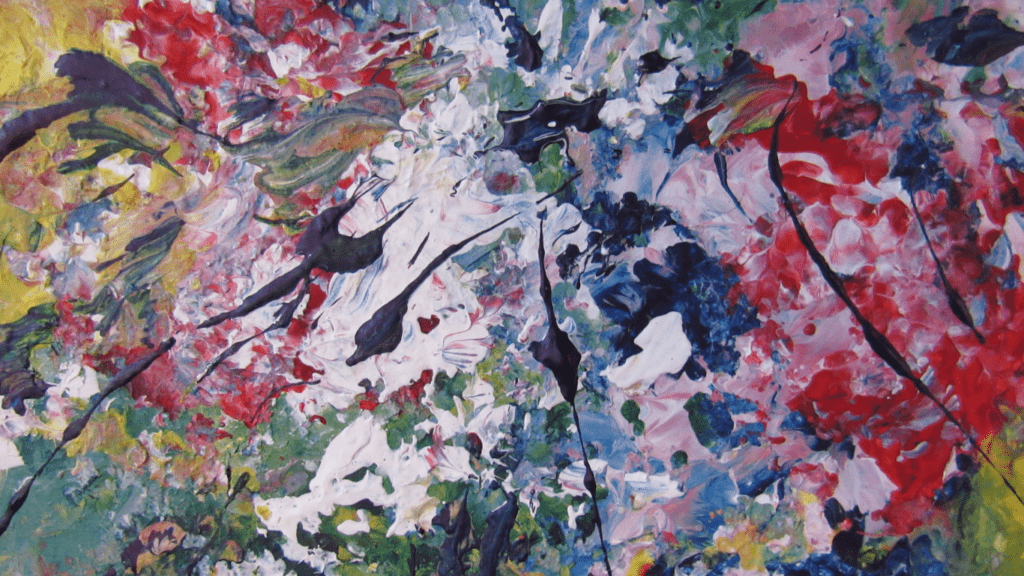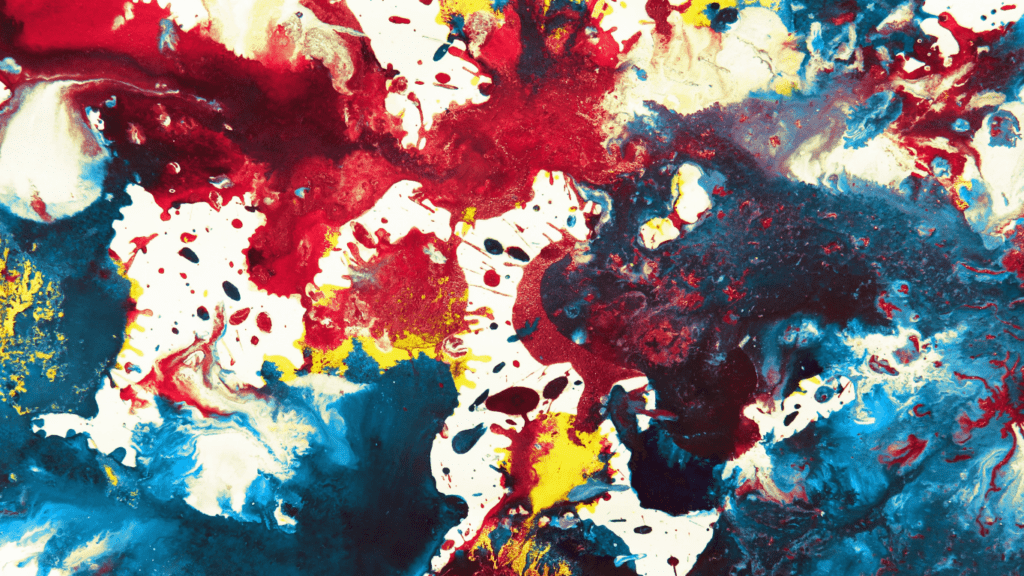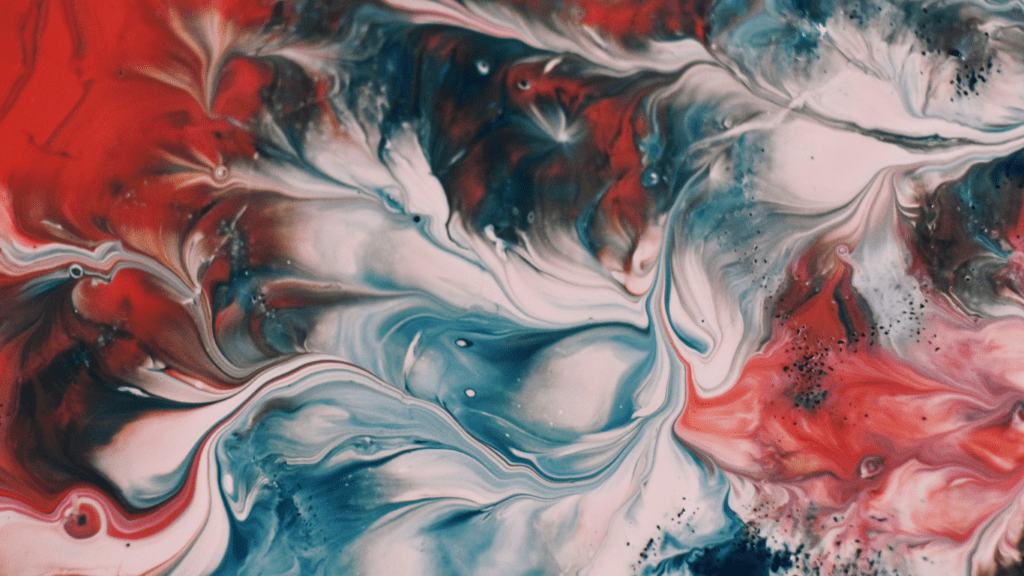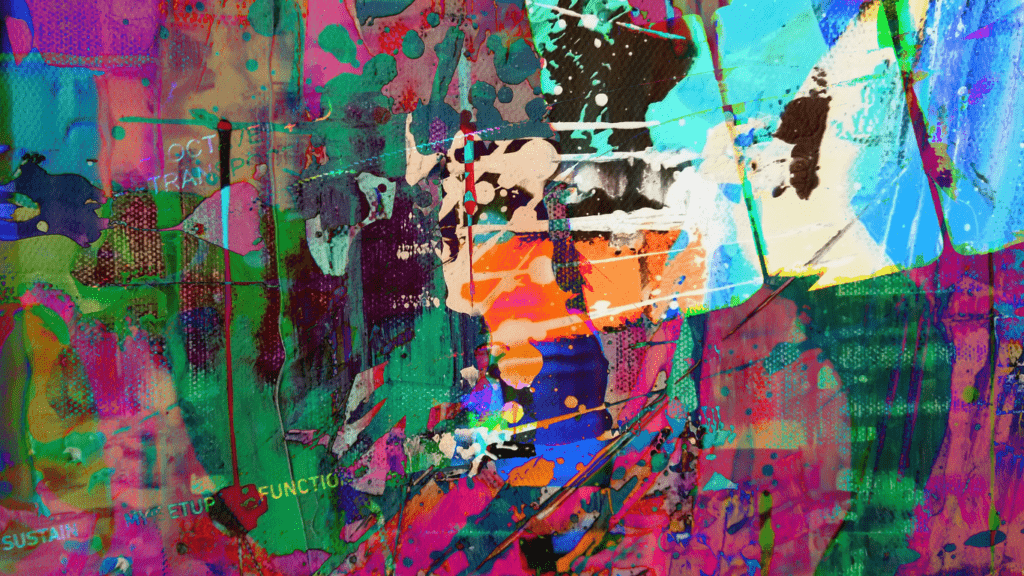Understanding Abstract Expressionism
Abstract Expressionism emerged in the 1940s and 1950s in the United States. Artists during this period prioritized emotional intensity over realistic depictions. Instead of focusing on representing the external world, they sought to express inner experiences and feelings. Major figures such as:
- Jackson Pollock
- Mark Rothko
- Willem de Kooning
led the movement. The movement’s artists used innovative techniques that broke away from traditional methods. Pollock’s drip painting involved splattering paint on canvas, creating dynamic and spontaneous forms. Rothko applied large blocks of color, aiming for viewers to experience profound emotional responses. De Kooning’s vigorous brushstrokes and abstract forms conveyed raw energy and emotion.
Color played a crucial role in Abstract Expressionism. Artists used color to evoke emotions, with each hue carefully chosen to elicit specific feelings. Rothko’s use of deep reds and blacks, for example, created somber and meditative experiences. Contrasts in color and form enhanced the emotional impact of the artworks.
The movement emphasized the artist’s presence within the work. Artworks are often large-scale, allowing viewers to immerse themselves fully. These pieces invite contemplation and personal interpretation. The lack of defined subjects encourages audiences to focus on color and form, exploring their emotional reactions.
Historical Context
Abstract Expressionism emerged in the mid-20th century. It blended revolutions in artistic techniques with profound emotional explorations.
Origins and Influences
Abstract Expressionism’s roots trace back to European modernism. Movements like Surrealism and Cubism significantly impacted its development. Early 20th-century avant-garde created an environment ripe for innovation. Artists escaping World War II brought European influences to the United States. Their integration into the American art scene accelerated Abstract Expressionism’s rise.
Key Artists and Movements
Major figures defined this movement. Jackson Pollock pioneered drip painting. His work emphasized spontaneous creation. Mark Rothko used vibrant color fields to evoke emotion. Rothko’s focus on color over form was revolutionary. Willem de Kooning blended abstraction with figurative elements. His work showcased the movement’s versatility. These artists, among others, formed a dynamic spectrum within Abstract Expressionism.
The Role of Color in Abstract Expressionism

Color in Abstract Expressionism shapes the viewer’s emotional and symbolic experience. Artists use color to convey deeper meanings and evoke specific feelings.
Emotional Impact
Colors in Abstract Expressionism elicit strong emotional responses. Red conveys passion or anger, while blue often signifies calm or melancholy. For instance, Mark Rothko’s color blocks use intense color contrasts to create immersive emotional experiences. Large expanses of color on a canvas can envelop viewers, making them feel a wide range of emotions from peace to turmoil.
Symbolic Meaning
Colors also hold symbolic meanings in Abstract Expressionism. While some artists use personal symbolism, others draw from cultural or universal associations. For example, Jackson Pollock’s chaotic drips of black and white paint might represent the conflict between order and chaos. Each color choice holds deeper layers of meaning, often left to the viewer’s interpretation. Rothko’s usage of dark hues in his later works might symbolize the artist’s personal struggles and existential reflections.
Techniques and Approaches
In Abstract Expressionism, color isn’t just an element but a key driver of the emotional and symbolic depth of the works. Artists employ varied techniques to explore the full potential of color.
Use of Bold Colors
Artists frequently use bold colors to create strong emotional reactions. For example, Jackson Pollock’s “Number 1A, 1948” showcases intense hues splattered and dripped across the canvas. These techniques help convey the artist’s raw emotions and energy. Through these vivid colors, artists can communicate a sense of urgency or elation.
Monochromatic Expressions
Monochromatic expressions focus on using varying shades of a single color to elicit subtler emotional responses. Mark Rothko’s “No. 61 (Rust and Blue)” employs a restrained palette to create a meditative atmosphere. By manipulating the tones and saturation within one color spectrum, artists can evoke a contemplative or serene mood. This approach contrasts with the energetic impact of bold colors, providing a quieter but equally profound emotional experience.
Iconic Works and Analysis
Many iconic works from Abstract Expressionism showcase how artists uniquely use color to express emotion and symbolism.
Jackson Pollock
Jackson Pollock, known for his drip painting technique, created pieces like “No. 5, 1948.” This artwork uses bold, chaotic splashes of color to convey intense energy and emotion. The dynamic motion Pollock achieved with layers of paint on large canvases invites the viewer to feel the action.
Mark Rothko
Mark Rothko’s works, such as “No. 61 (Rust and Blue),” reveal a different approach. Rothko’s use of large blocks of color, often in monochromatic schemes, encourages deep contemplation. The subtle variations within these blocks create an intimate, immersive experience, drawing the viewer into a meditative state.
Influence on Contemporary Art
- Abstract Expressionism’s role in shaping contemporary art remains significant. Many modern artists draw inspiration from its exploration of color and emotion. These abstract influences can be seen in works by Gerhard Richter and Yayoi Kusama, who use color to create visual impact.
- Richter, a renowned contemporary artist, often employs bold colors with abstract techniques reminiscent of Pollock’s chaotic energy. His “Abstract Painting” series showcases this influence through a vivid color palette and spontaneous application, echoing Abstract Expressionism’s emotional power.
- Similarly, Kusama’s installations and paintings feature repetitive patterns and vibrant colors, creating immersive environments. Her use of color and space mirrors Rothko’s contemplative effect, drawing viewers into a sensory experience.
- Contemporary art also adopts the symbolic use of color from Abstract Expressionism. Artists like Anish Kapoor and Ellsworth Kelly leverage color to convey deeper meanings. Kapoor’s “Cloud Gate” uses reflective surfaces and minimal color to evoke introspection, while Kelly’s color field paintings strip down visual elements to their essentials, much like Rothko’s work.
- The influence of Abstract Expressionism on contemporary art is evident in the continued emphasis on color and emotion, resonating through the works of today’s leading artists.





